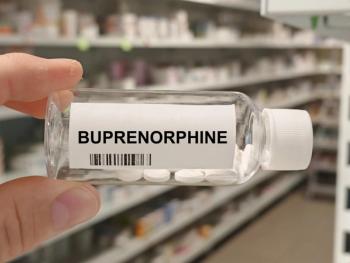There was a time when the corner drugstore was as dependable as the bank on Main Street or the church steeple. Neighbors picked up prescriptions, grabbed cough syrup, and leaned on the pharmacist for advice or reassurance. The pharmacy wasn’t just a store—it was a community anchor.
Today, that anchor is slipping away. More towns, whether out in farm country or tucked inside city neighborhoods, are finding themselves without a local pharmacy. Experts call them pharmacy deserts, but what the term really describes is families driving 30 miles for blood pressure pills, waiting days for insulin deliveries, and watching once-bustling storefronts stand empty. Pharmacy deserts are becoming one of the quietest, yet most serious, challenges in American health care.
WHAT A PHARMACY DESERT MEANS IN PRACTICE
A pharmacy desert is any community where residents lack reasonable access to a drugstore. In plain language: If it takes half a day off work, 2 bus rides, or gas money a family doesn’t have to reach a pharmacy, that neighborhood qualifies.
About the Author
Ned Milenkovich, PharmD, JD, is chair of the health care law practice at Much Shelist, PC in Chicago, Illinois, and former vice chairman of the Illinois State Board of Pharmacy. He can be reached at 312-521-2482 or nmilenkovich@muchlaw.com.
Imagine a mother with 2 children and no car riding multiple buses across town to get an antibiotic. Picture a retired farmer driving an hour each way to refill heart medication. Consider an older widow unfamiliar with the internet who is told that her only option is to order prescriptions online. That is what life in a pharmacy desert looks like—neighbors left behind not by choice, but by circumstance.
Pharmacies are not merely pill dispensaries. They also provide vaccines; dispense inhalers, insulin, nicotine patches, emergency contraception, and lifesaving naloxone; offer rapid strep and flu testing and, in some states, even prescribe antivirals when appropriate; furnish blood pressure checks, glucose monitoring supplies, and point-of-care counseling for chronic diseases; help patients navigate insurance hurdles, prior authorizations, and medication substitutions; and stock durable medical equipment (eg, canes, walkers, blood pressure cuffs) that keep people safe at home.
Pharmacists are often the first to catch dangerous drug interactions or to explain complicated directions in everyday language. Without access to those services, communities face more than inconvenience—they face real risks to health and safety.
WHY PHARMACIES ARE DISAPPEARING
Several forces are pushing pharmacies out of neighborhoods, and together they create a perfect storm.
- Corporate restructuring. Rite Aid declared bankruptcy, weighed down by lawsuits and debt, and closed stores across the country.1-3 CVS, the nation’s largest chain, has been trimming stores.2 Walgreens, under the heavy hand of private equity investors, is also scaling back locations.4 What looks like smart financial maneuvering in boardrooms translates to locked doors and empty shelves in communities.5
- Thin margins. Pharmacies operate on slim profit margins. The payments they receive from health plans and other payers often do not cover the true costs of acquiring medicines, staffing stores, and counseling patients. The arithmetic simply does not add up. Pharmacies cannot remain open if the dollars going out outweigh the dollars coming in.3
- Changing habits. More patients are turning to online or mail-order pharmacies. Although these options are convenient for some, they leave behind older adults, those with unstable housing, and anyone needing same-day fills or face-to-face conversations with a pharmacist.
WHO FEELS THE IMPACT MOST, AND STEPS TOWARD A SOLUTION
Pharmacy deserts do not strike evenly across the country. They land hardest where people are already at a disadvantage, such as rural America, lowincome neighborhoods, and older patients and those with disability. The fallout is significant: Patients skip refills, chronic conditions worsen, preventive services (eg, vaccines) fall through the cracks, and. all too often, untreated conditions send people to emergency departments—visits that cost far more than supporting a neighborhood pharmacy.5
Pharmacy deserts are not inevitable. With the right choices, access can be preserved via the following:
- Fair reimbursement. Pharmacies need payment models that reflect the real cost of dispensing medicine and providing patient care. Pharmacies, payers, and policymakers must work together to ensure sustainability.4
- Community and nonprofit models. Where profit margins fall short, nonprofit or publicly supported pharmacies can step in, much like community health centers. Access should take priority over profit.
- Telepharmacy and mobile units. In rural or underserved areas, telepharmacy kiosks or mobile pharmacy vans can fill gaps. Although imperfect, they provide better access than none.
- Wisely used settlement funds. Billions of dollars from opioid litigation are flowing into states. Directing some of those funds toward sustaining pharmacy access in the hardest-hit communities would be a smart investment in prevention and long-term health.
WHY IT MATTERS TO EVERYONE
Pharmacy deserts are not just a local inconvenience; they are a national economic and health issue. Nonadherence to prescriptions already costs the US health care system nearly $300 billion each year in avoidable hospitalizations and complications.6
Guaranteeing access to pharmacies is one of the most cost-effective ways to cut that waste while improving health outcomes.
Pharmacies also carry social and economic weight. They provide jobs, support Main streets, and serve as trusted neighborhood institutions. Their disappearance leaves not only medical gaps but also boarded-up storefronts and weakened communities.
A WAKE-UP CALL
The bankruptcy of Rite Aid, the retrenchment of Walgreens under private equity, and the downsizing of CVS are not just business stories. They are warning signals that pharmacy deserts will keep spreading unless deliberate action is taken.
Pharmacies are more than places to pick up pills. They are safety nets, counselors, and community fixtures. Without them, families are left to make impossible choices about their health. The challenge is clear: Either take steps to preserve pharmacy access now or watch more neighborhoods and towns drift into deserts they never asked to inhabit.
REFERENCES
1. Bell A. Rite Aid bankruptcy could create hundreds of new pharmacy deserts. BenefitsPRO. May 7, 2025. Accessed September 25, 2025. https://www.benefitspro.com/2025/05/07/rite-aid-bankruptcy-could-create-hundreds-of-new-pharmacydeserts/
2. Cameron H. Rite Aid closures reach 1000 as America faces ‘pharmacy deserts.’ Newsweek. Updated July 2, 2025. Accessed September 26, 2025. https://www.newsweek.com/rite-aid-cvsclosures-pharmacy-deserts-2092920
3. Valle S, Knauth D. Court approves fire-sale of most Rite Aid’s pharmacy assets. Reuters. May 21, 2025. Updated May 21, 2025. Accessed September 25, 2025. https://www.reuters.com/business/healthcare-pharmaceuticals/court-approves-fire-salemost-rite-aids-pharmacy-assets-2025-05-21/
4. Pharmacy deserts are appearing across U.S. as Rite Aid, Walgreens, CVS store closures spread. CNBC. October 11, 2024. Updated October 11, 2024. Accessed September 25, 2025. https://www.cnbc.com/2024/10/11/pharmacy-deserts-across-us-drugstores-closures-spread.html
5. Gregg A, Peiser J. Drugstore closures are leaving millions without easy access to a pharmacy. Washington Post. October 22, 2023. Accessed September 26, 2025. https://www.washingtonpost.com/business/2023/10/22/drugstore-close-pharmacy-deserts/
6. Langer Research Associates. Medication Adherence in America: A National Report Card. National Community Pharmacists Association. June 2013. Accessed September 25, 2025. https://www.researchgate.net/publication/257129290_Medication_Adherence_in_America_A_National_Report_Card



















































































































































































































